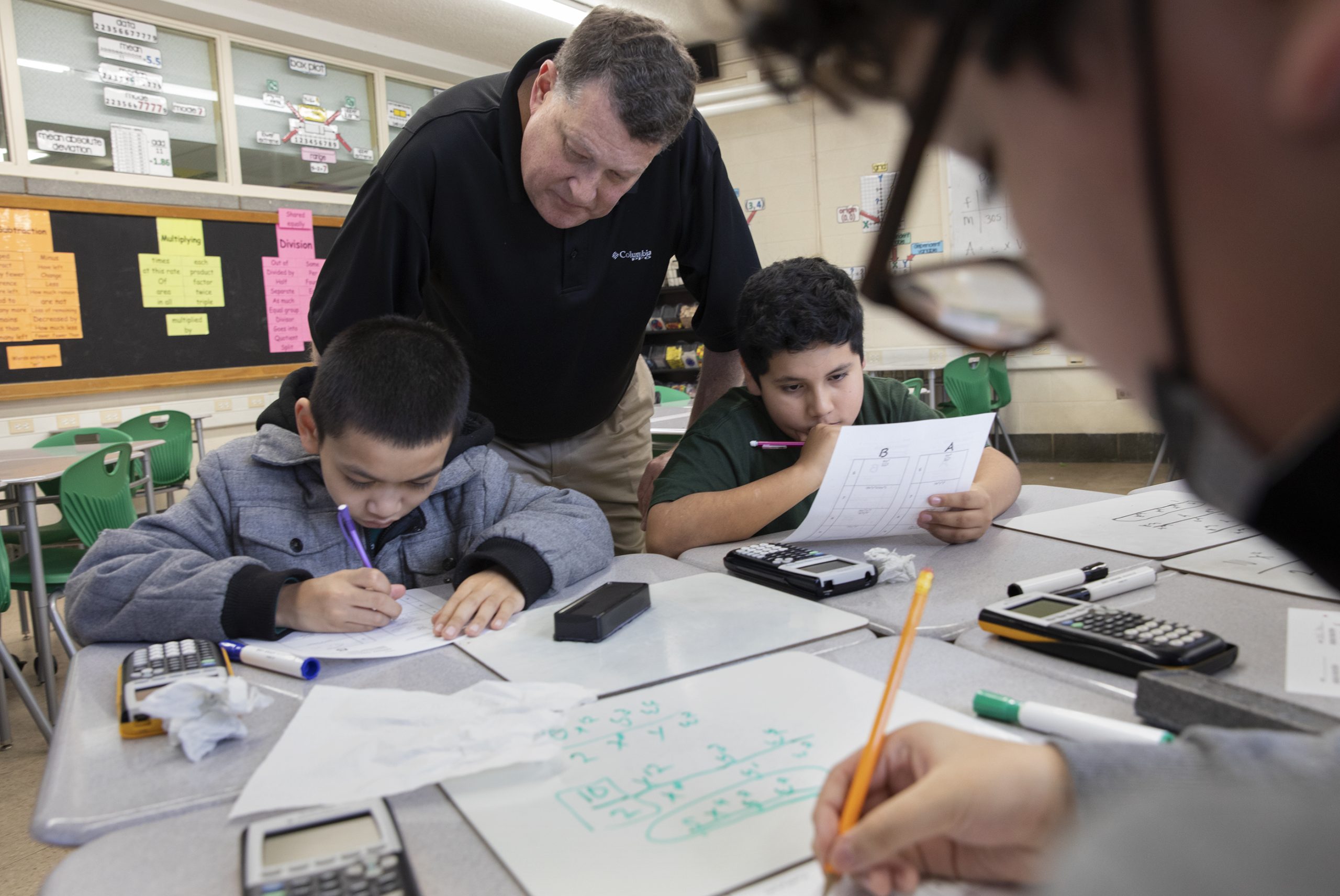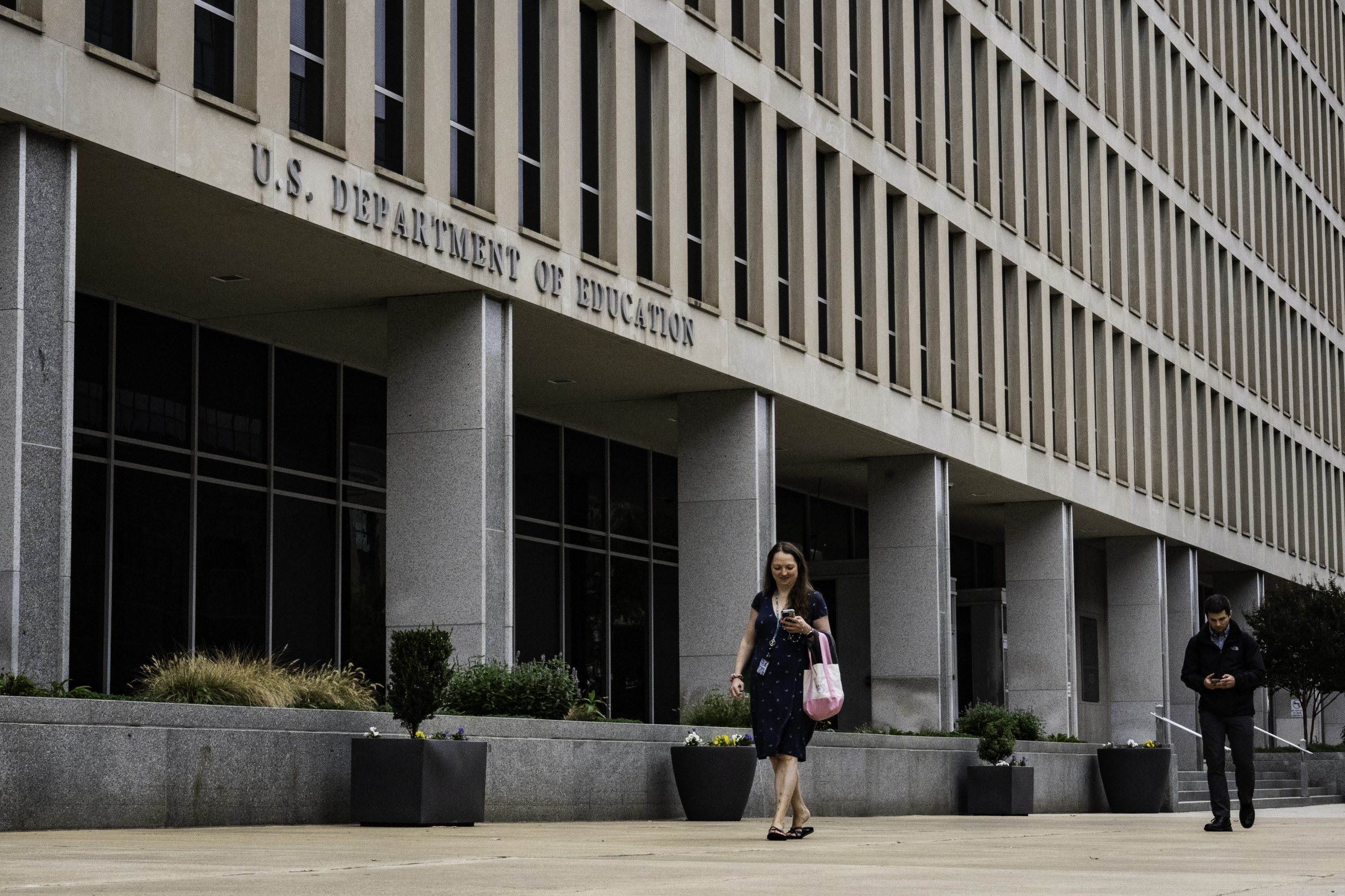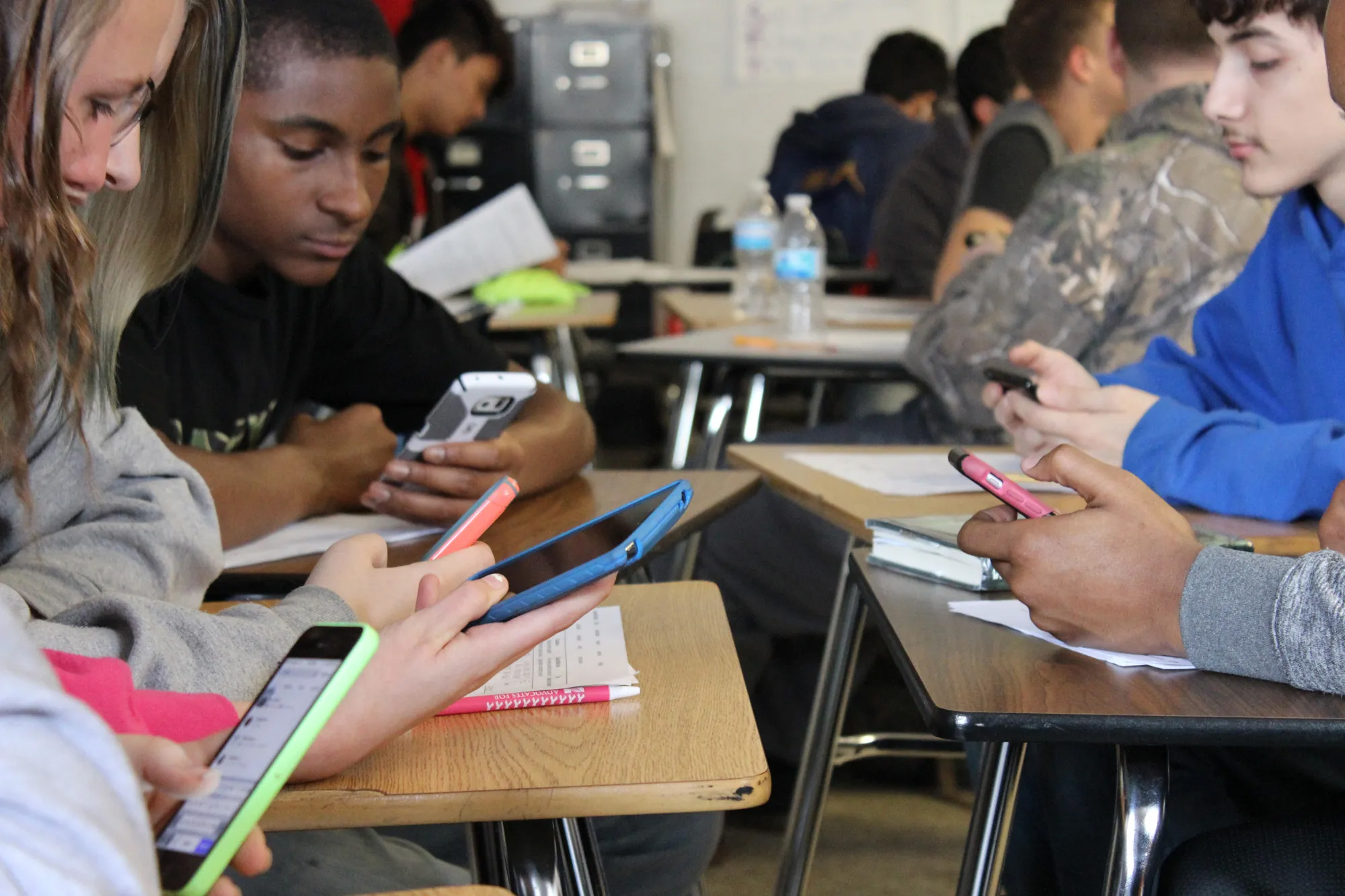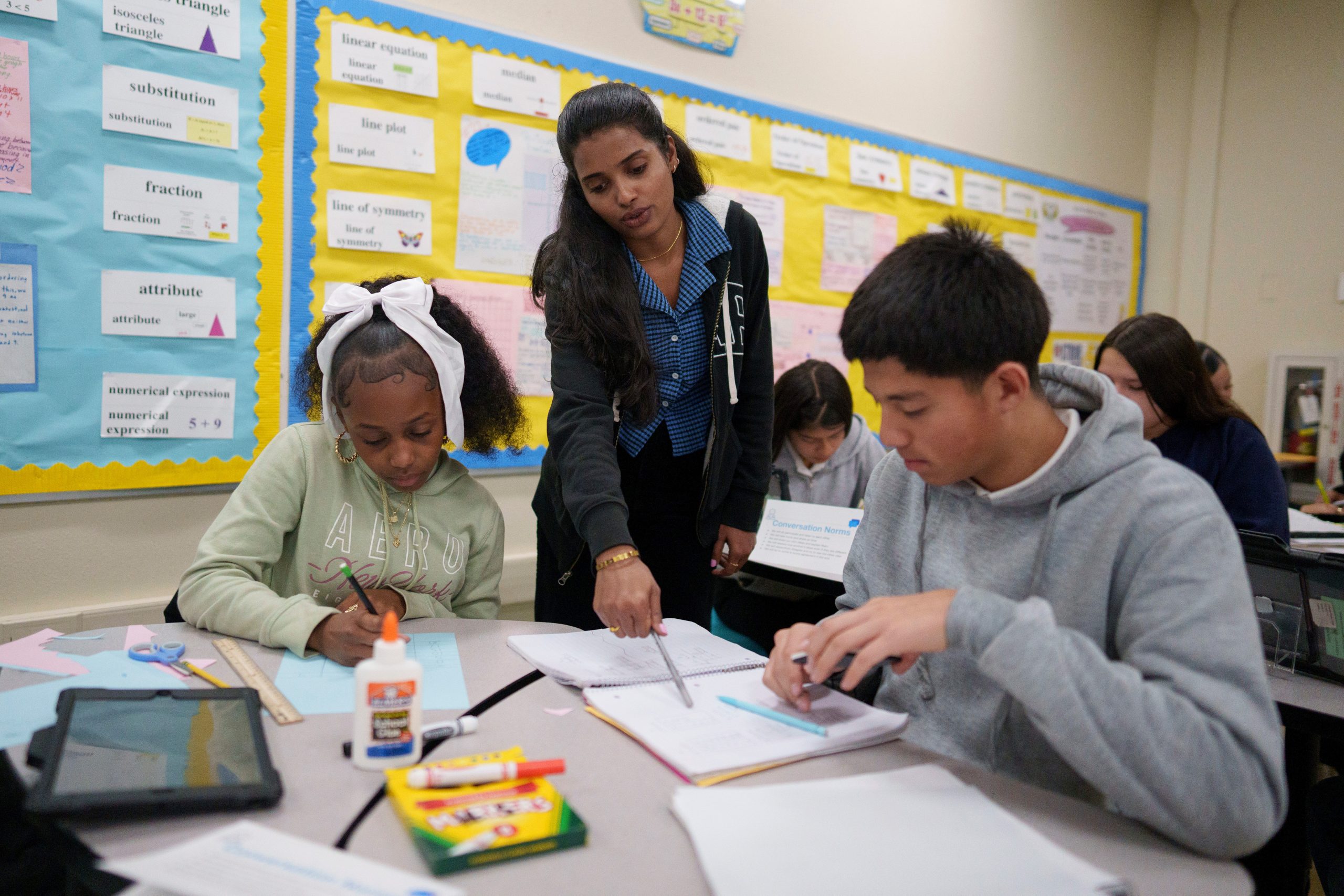by Jill Barshay, The Hechinger Report
November 17, 2025
The teaching profession is one of the most female-dominated in the United States. Among elementary school teachers, 89 percent are women, and in kindergarten, that number is almost 97 percent.
Many sociologists, writers and parents have questioned whether this imbalance hinders young boys at the start of their education. Are female teachers less understanding of boys’ need to horse around? Or would male role models inspire boys to learn their letters and times tables? Some advocates point to research that lays out why boys ought to do better with male teachers.
But a new national analysis finds no evidence that boys perform or behave better with male teachers in elementary school. This challenges a widespread belief that boys thrive more when taught by men, and it raises questions about efforts, such as one in New York City, to spend extra to recruit them.
“I was surprised,” said Paul Morgan, a professor at the University at Albany and a co-author of the study. “I’ve raised two boys, and my assumption would be that having male teachers is beneficial because boys tend to be more rambunctious, more active, a little less easy to direct in academic tasks.”
Related: Our free weekly newsletter alerts you to what research says about schools and classrooms.
“We’re not saying gender matching doesn’t work,” Morgan added. “We’re saying we’re not observing it in K through fifth grade.”
Middle and high school students might see more benefits. Earlier research is mixed and inconclusive. A 2007 analysis by Stanford professor Thomas Dee found academic benefits for eighth-grade boys and girls when taught by teachers of their same gender. And studies where researchers observe and interview a small number of students often show how students feel more supported by same-gender teachers. Yet many quantitative studies, like this newest one, have failed to detect measurable benefits for boys. At least 10 since 2014 have found zero or minimal effects. Benefits for girls are more consistent.
This latest study, “Fixed Effect Estimates of Teacher-Student Gender Matching During Elementary School,” is a working paper not yet published in a peer-reviewed journal.* Morgan and co-author Eric Hu, a research scientist at Albany, shared a draft with me.
Morgan and Hu analyzed a U.S. Education Department dataset that followed a nationally representative group of 8,000 students from kindergarten in 2010 through fifth grade in 2017. Half were boys and half were girls.
More than two-thirds — 68 percent — of the 4,000 boys never had a male teacher in those years while 32 percent had at least one. (The study focused only on main classroom teachers, not extras like gym or music.)
Among the 1,300 boys who had both male and female teachers, the researchers compared each boy’s performance and behavior across those years. For instance, if Jacob had female teachers in kindergarten, first, second and fifth grades, but male teachers in third and fourth, his average scores and behavior were compared between the teachers of different genders.
Related: Plenty of Black college students want to be teachers, but something keeps derailing them
The researchers found no differences in reading, math or science achievement — or in behavioral and social measures. Teachers rated students on traits like impulsiveness, cooperation, anxiety, empathy and self-control. The children also took annual executive function tests. The results did not vary by the teacher’s gender.
Most studies on male teachers focus on older students. The authors noted one other elementary-level study, in Florida, that also found no academic benefit for boys. This new research confirms that finding and adds that there seems to be no behavioral or social benefits either.
For students at these young ages, 11 and under, the researchers also didn’t find academic benefits for girls with female teachers. But there were two non-academic ones: Girls taught by women showed stronger interpersonal skills (getting along, helping others, caring about feelings) and a greater eagerness to learn (represented by skills such as keeping organized and following rules).
When the researchers combined race and gender, the results grew more complex. Black girls taught by women scored higher on an executive function test but lower in science. Asian boys taught by men scored higher on executive function but had lower ratings on interpersonal skills. Black boys showed no measurable differences when taught by male teachers. (Previous research has sometimes found benefits for Black students taught by Black teachers and sometimes hasn’t.)**
Even if data show no academic or behavioral benefits for students, there may still be compelling reasons to diversify the teaching workforce, just as in other professions. But we shouldn’t expect these efforts to move the needle on student outcomes.
“If you had scarce resources and were trying to place your bets,” Morgan said, “then based on this study, maybe elementary school isn’t where you should focus your recruitment efforts” to hire more men.
To paraphrase Boyz II Men, it’s so hard to say goodbye — to the idea that young boys need male teachers.
*Clarification: The article has not yet been published in a peer-reviewed journal but has undergone some peer review.
**Correction: An earlier version incorrectly characterized how researchers analyzed what happened to students of different races. The researchers focused only on the gender of the teachers, but drilled down to see how students of different races responded to teachers of different genders.
Contact staff writer Jill Barshay at 212-678-3595, jillbarshay.35 on Signal, or [email protected].
This story about male teachers was produced by The Hechinger Report, a nonprofit, independent news organization focused on inequality and innovation in education. Sign up for Proof Points and other Hechinger newsletters.
This <a target=”_blank” href=”https://hechingerreport.org/proof-points-male-teachers-elementary-school/”>article</a> first appeared on <a target=”_blank” href=”https://hechingerreport.org”>The Hechinger Report</a> and is republished here under a <a target=”_blank” href=”https://creativecommons.org/licenses/by-nc-nd/4.0/”>Creative Commons Attribution-NonCommercial-NoDerivatives 4.0 International License</a>.<img src=”https://i0.wp.com/hechingerreport.org/wp-content/uploads/2018/06/cropped-favicon.jpg?fit=150%2C150&ssl=1″ style=”width:1em;height:1em;margin-left:10px;”>
<img id=”republication-tracker-tool-source” src=”https://hechingerreport.org/?republication-pixel=true&post=113362&ga4=G-03KPHXDF3H” style=”width:1px;height:1px;”><script> PARSELY = { autotrack: false, onload: function() { PARSELY.beacon.trackPageView({ url: “https://hechingerreport.org/proof-points-male-teachers-elementary-school/”, urlref: window.location.href }); } } </script> <script id=”parsely-cfg” src=”//cdn.parsely.com/keys/hechingerreport.org/p.js”></script>










